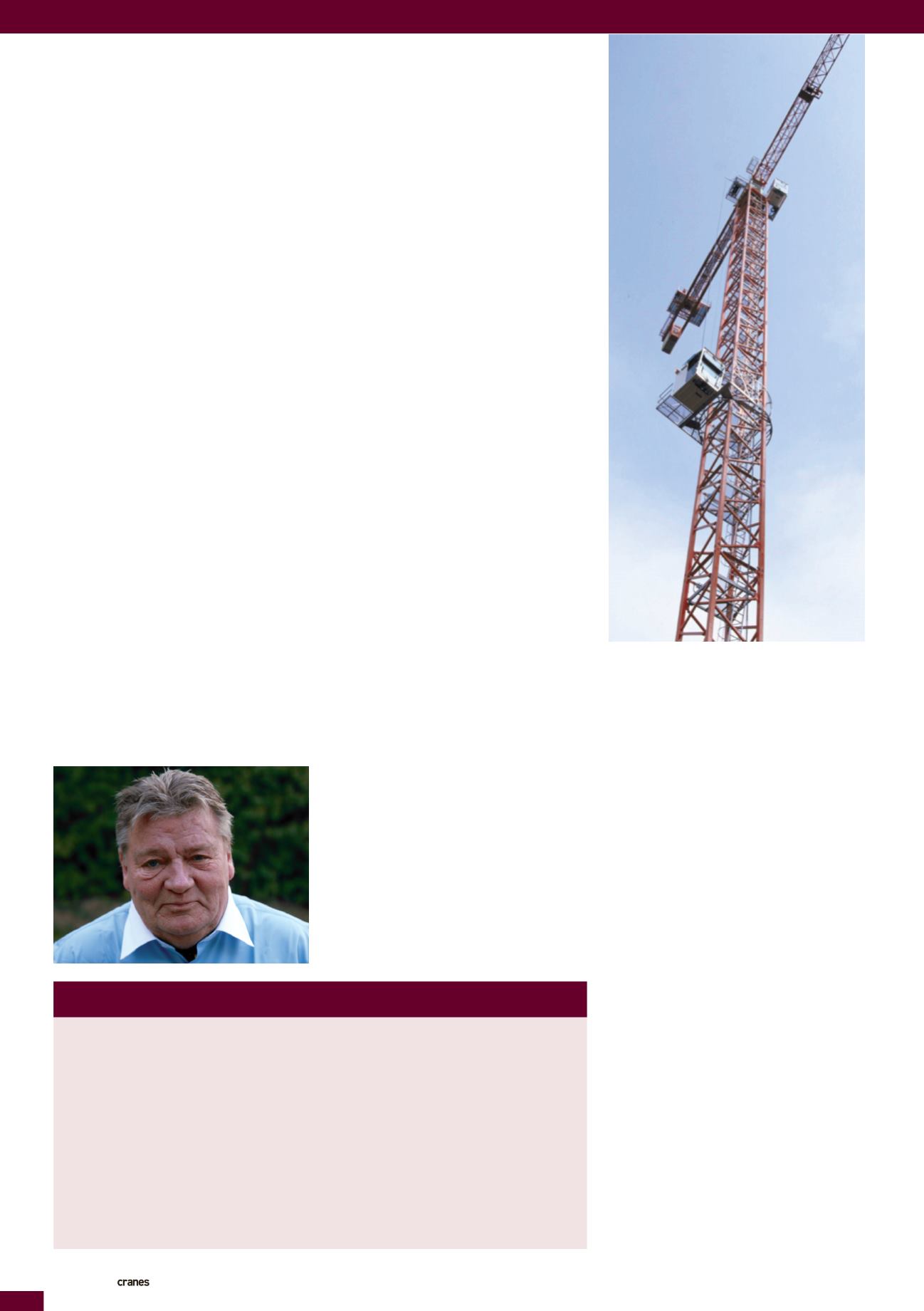
INTERNATIONAL ANDSPECIALIZED TRANSPORT
■
APRIL 2015
18
PRODUCTNEWS
Kranutveckling i centrum (1998)
ASwedishsurvey done togetherwithSBEF (SwedishBuildersandContractorsAssociation) and
Bygghälsan (SwedishConstructionHealthandSafety). Testsand interviewswere carriedout
on four different constructionsites inStockholm, Sweden, where theyall used theProcab for
10months.
Project inFrance togetherwithOPPBTP
Testswere carriedout onone traditional crane, that had tobe climbed, andone cranewith the
Procab, bothat thesame constructionsite. Doctorsmonitored the twooperatorsduring their
workday. Amongother things theymeasured theheart rateof theoperator after his climb
compared to theoperator in theProcaband it tookalmost 20minutes for the first operator to
return toanormal heart rate. Alsowith critical loads theoperator in craneonehadamuch
higher heart rate compared tonumber two.
REFERENCES
unhooking it. It ismore likely that
anoperatorwill see impendinghazards and
take corrective action in time to
avoid them.
Anotheroperational safety issue is the
languagebarrier.More andmoreoften
the craneoperator and slinger/signaller
orbanksman speakdifferent languages.
Communication canbe clearerbetween
theoperator and thebanksmanbecause the
lineof sight is likely tobebetter.
Being closer to the loadingandunloading
points improves communicationand
reduces the riskof accidents, Loftmyr says.
A safetyandproductivitybenefit from
havingabetter and closer viewof the load
is that it allows anoperator tobemore
precise and fasterwith loadplacement
and, for example, not hoisting loads
unnecessarilyhigh.
Morework
Loftmyr estimates that productivity canbe
higherby30 to40minutes adaybyusing
theProcab. From thebeginning, alreadyat
ground level, theoperator is immediatelyat
hiswork station.
Productivity is enhancedbecause first
thing in themorningand immediately
followinganybreaks, the site can start
workingagainmuchmorequickly than
traditional siteswhere everyonehas towait
while theoperator climbs ladders to reach
the cabin.
Ona60metrehigh crane it takes the
craneoperator 10 to15minutes to reach
the cabinand startworking, Loftmyr says,
and it also takes almost the same amount
of time to climbdown the crane again.
Multiply that by thenumberof times an
operator ascends anddescends inadayand
thatwill behowmuch timeyou save and
increaseproductivity.All the time that the
operator spendson the ladder is timewhen
the crane isnot operating.
A furtherbenefit givenbyLoftmyr
forhis system is that because ascent and
descent is somuchmore rapid, especially
from taller and thereforepreviouslymore
isolated cranes, theoperator canbemuch
moreapart of the teamon site. It ispossible
for them to join the rest of the crew for
meals andanyotherbreaksormeetings
insteadof having to remainup
in the cabinat the topof the tower. Itmakes
it practical for anoperator todescend
during thedaymoreoften
wherenecessary.
Inan emergency situation,where a
fast descent is required, theProcaballows
a sickor injuredoperatororother crew
member to reach thegroundmorequickly
and comfortably thanothermethods. If
the crew cannotmake contactwith the
operator theypushan evacuationbutton
and theProcabautomaticallydescends,
allowing easyaccess to take careof the
operator.Noother rescuepersonnel are
needed to lower theoperator.
Product development
The cabinalways rotateswith the slewingof
the crane’sboom, regardlessof itsposition
on themast or tower.OriginallyLoftmyr’s
Procabwasoperatedbyawire ropewinch
fromDemag.Nowa redesignaspart of
furtherdevelopment of the systemhas seen
a change toa rackandpiniondesign for the
elevation function. “We are in theprocess
of testing the changeover from rope to rack
andpinionandalso tryingout a solution to
be able to climb themast evenwhen tower
is flexingabove50m,”Loftmyr explains.
“Anadaptive system fordifferent sizes
of tower section is also inprogress.We
expectCEapproval in the thirdquarterof
2015andproduction to start immediately
after andbefore the endof 2015,”Loftmyr
continues. Two sizesof frame areoffered to
accommodate themast dimensionsof the
majorityof tower cranes inoperation. The
cabin’s frame runsup theoutside cornersof
the cranemast onpolymerwheels. These
wheels are adjustable andhave suspension
togive smoothoperation.Amaximumof
150kgof pressure is exertedon the tower,
distributed through the setsofwheelson
the four corners.
Sowhat does it all cost?Loftmyr says
Procab is competitivewitha conventional
rackandpinion type elevator system,
especiallywhenyou consider themultiple
additional benefits.Wherepossible the
existing cabin that belongs to the crane is
used. If that is impossible, for example,with
someLiebherr cranes, thepriceof anew
cabinneeds tobe added.
Loftmyrhasput decadesof experience
intoProcabandworkedhardon its
development.Now,with impending
European legislationandpressure likely
elsewhere, “It justmakes evenmore sense,”
he says, “A tower craneoperatorwho is
suffering less from fatigue and chronic
medical problems andwho can feel part
of a teamwill behappier, safer and
moreproductive.”
■
Leif Loftmyr, inventor andProcabElevationCEO
The cabinof the
Procabalways rotates
with the slewing
of the crane’s
boom, regardless
of itsposition
on the tower


